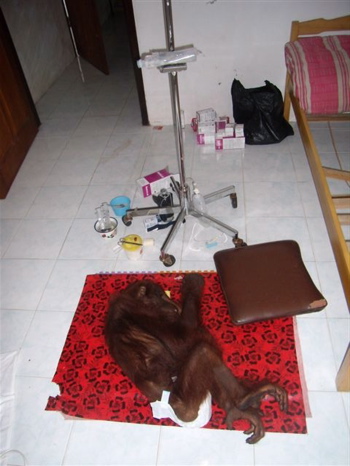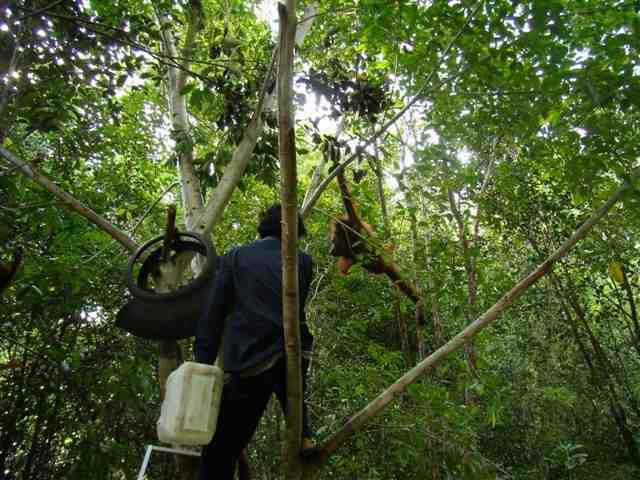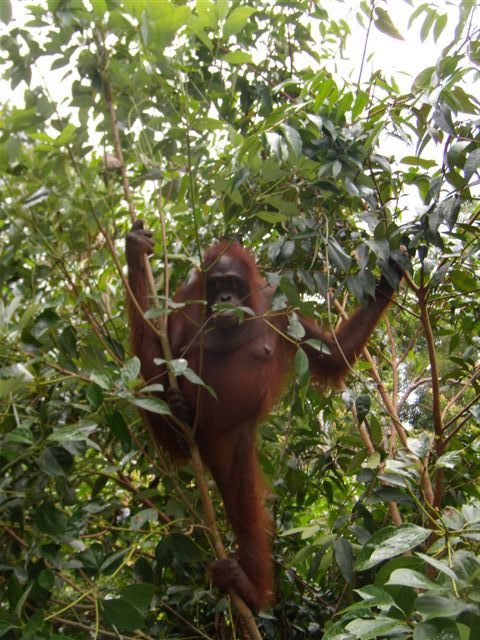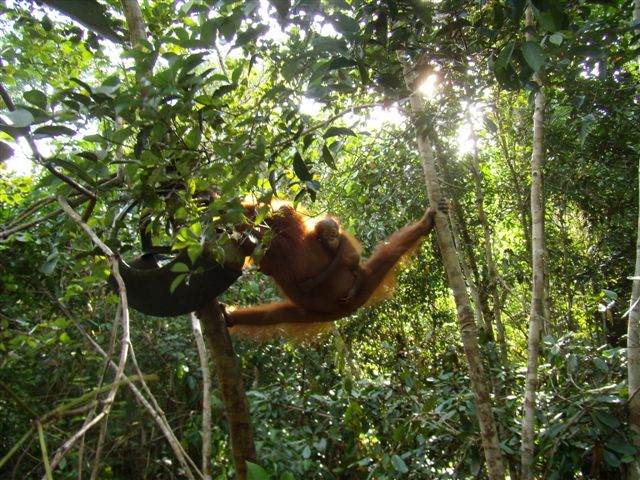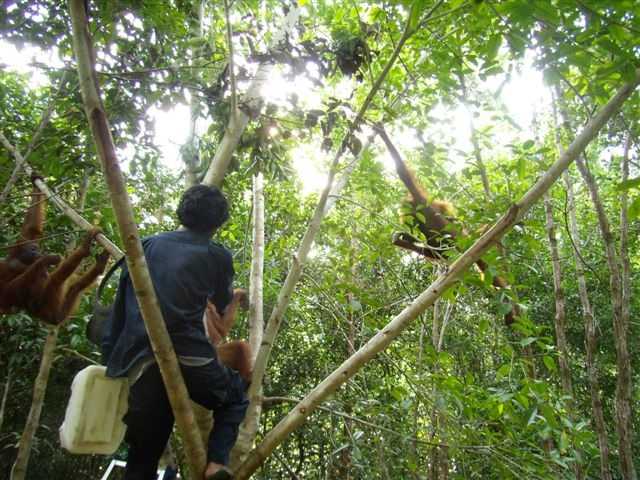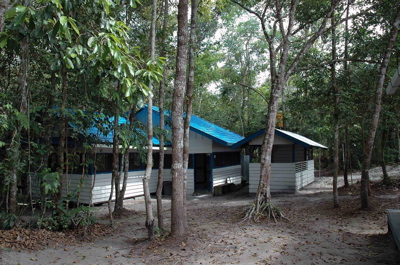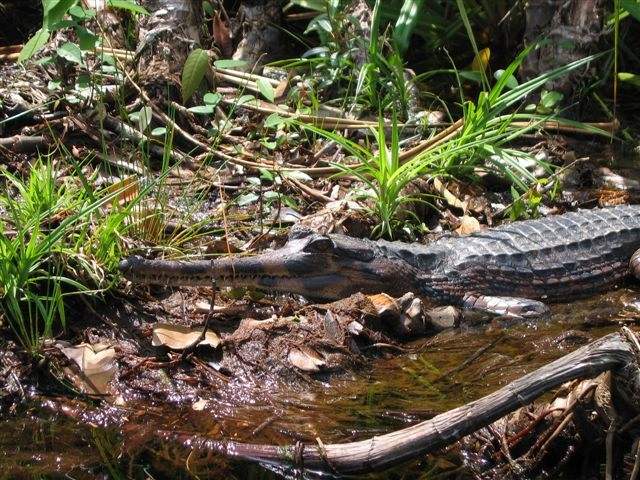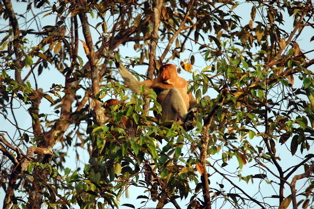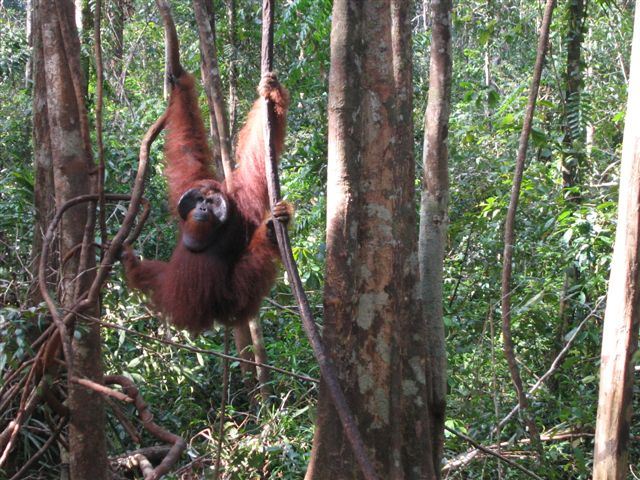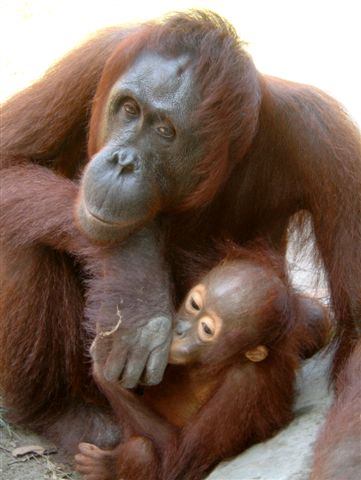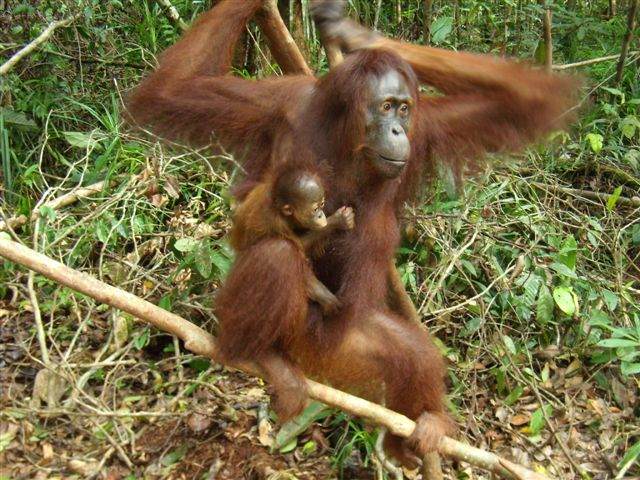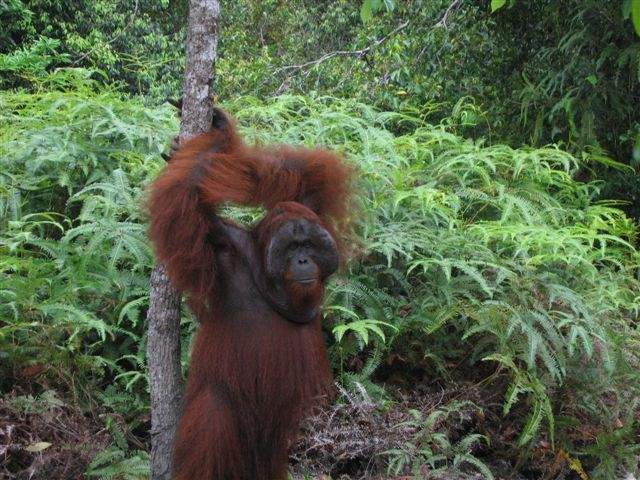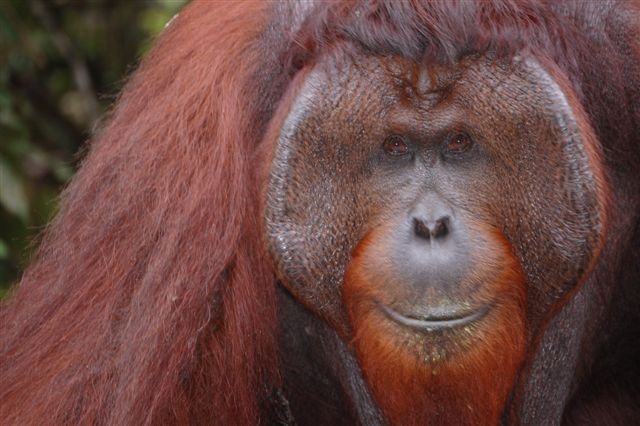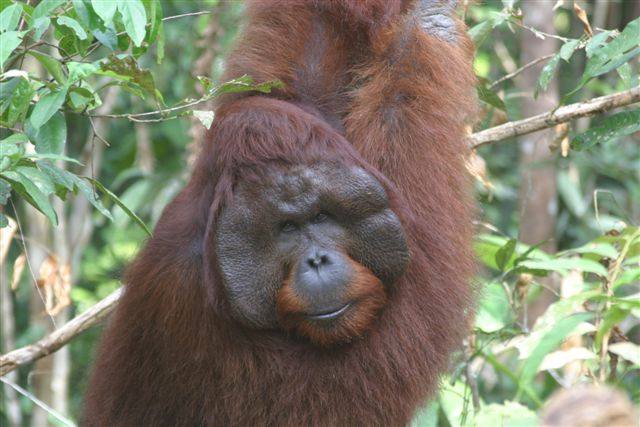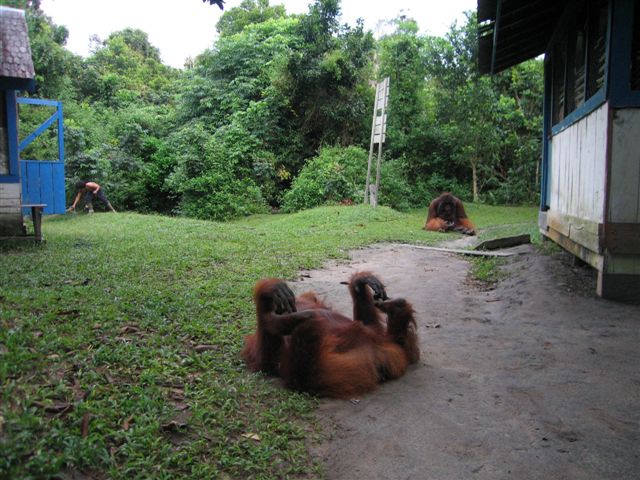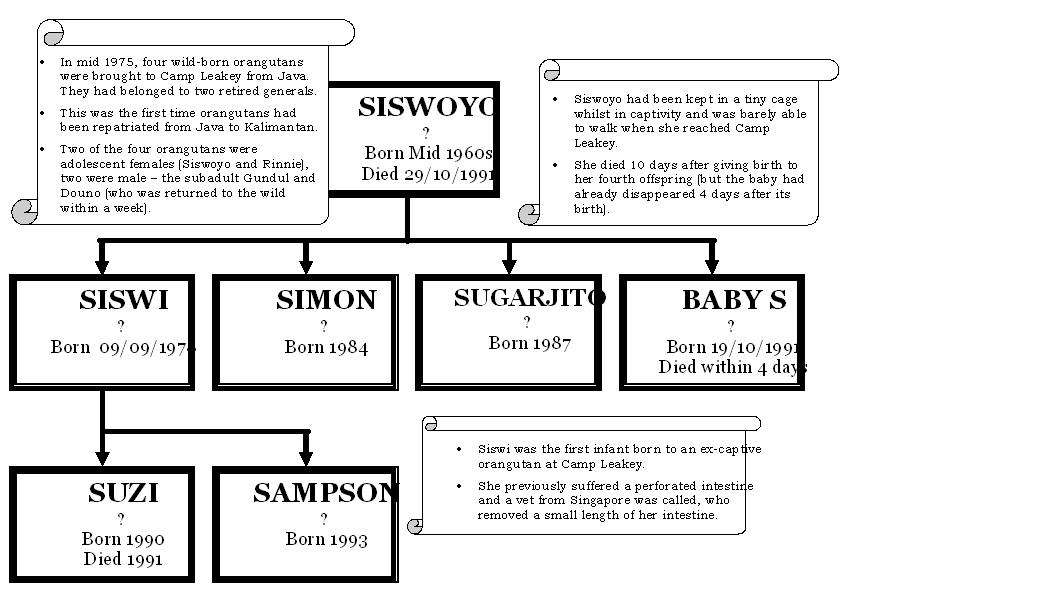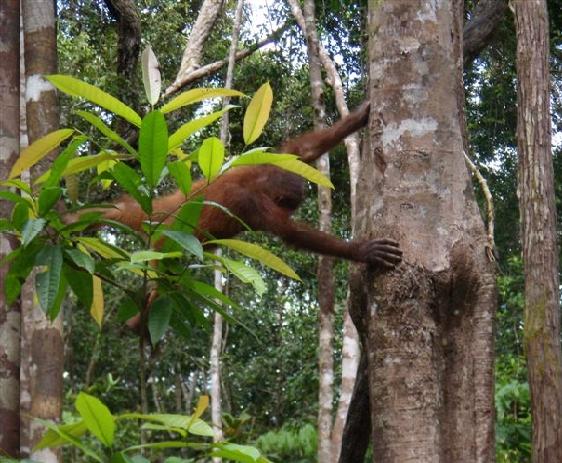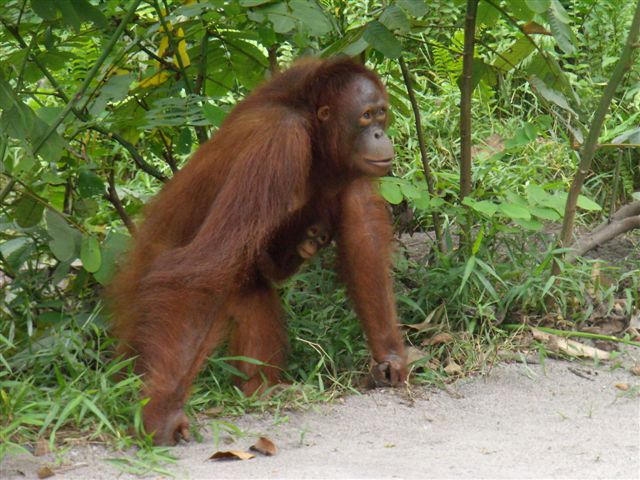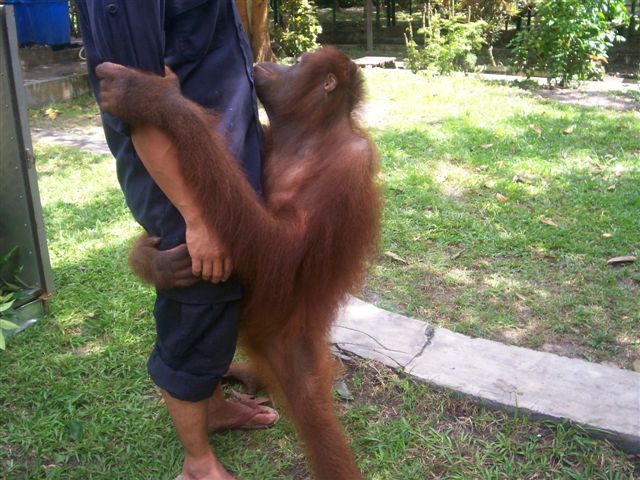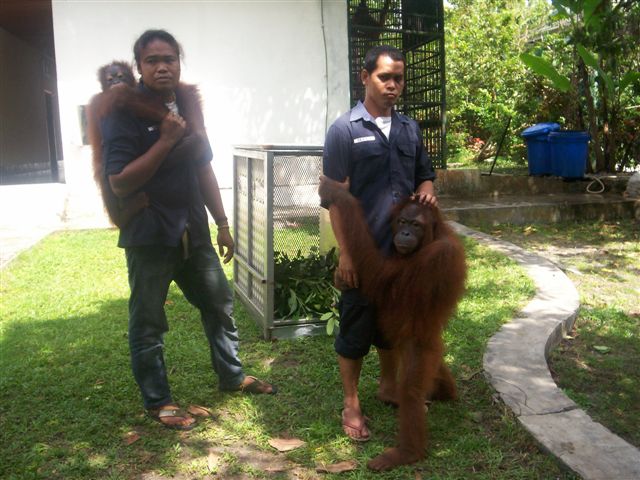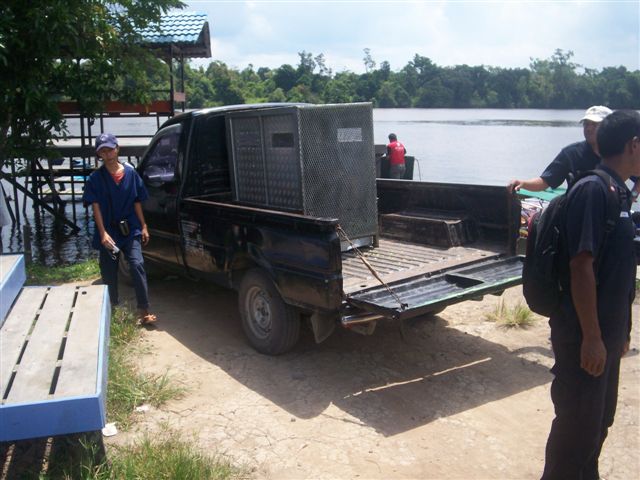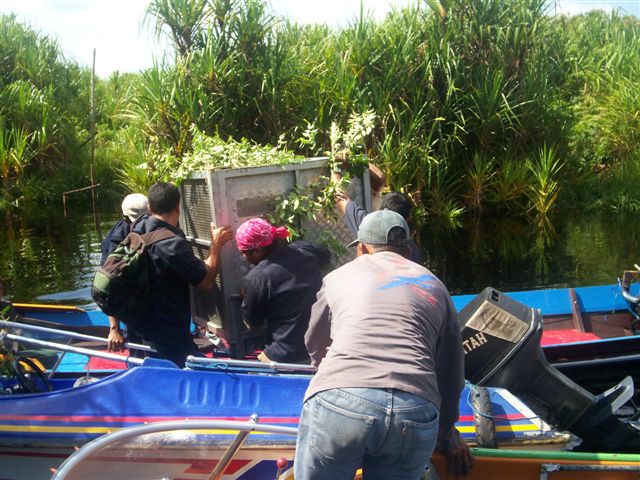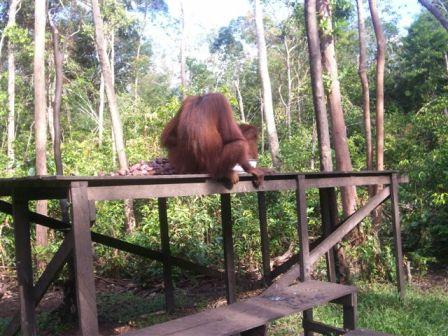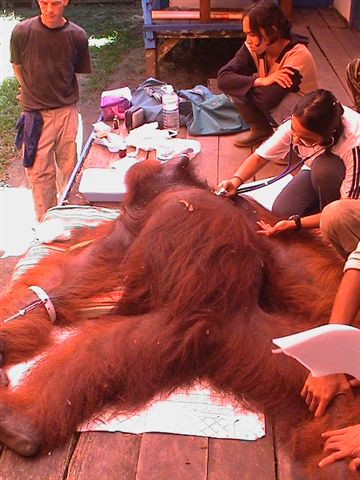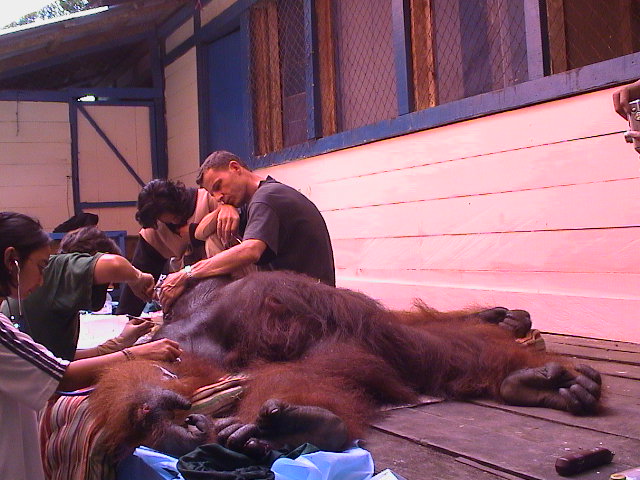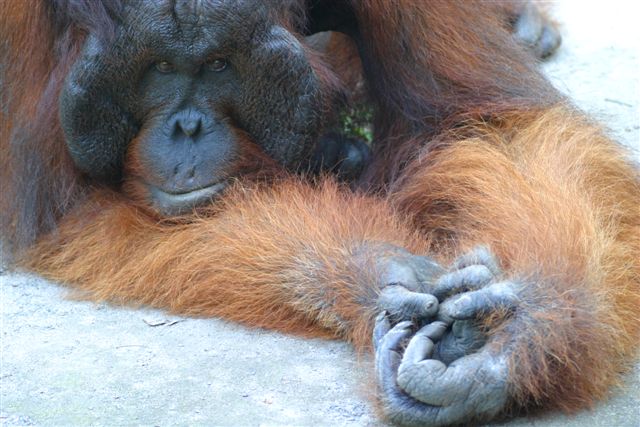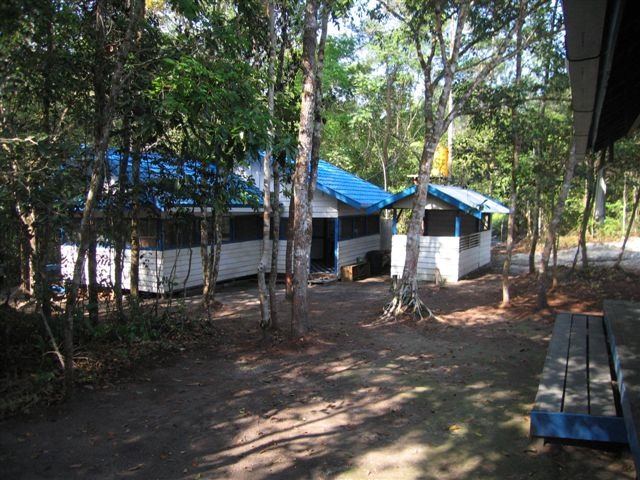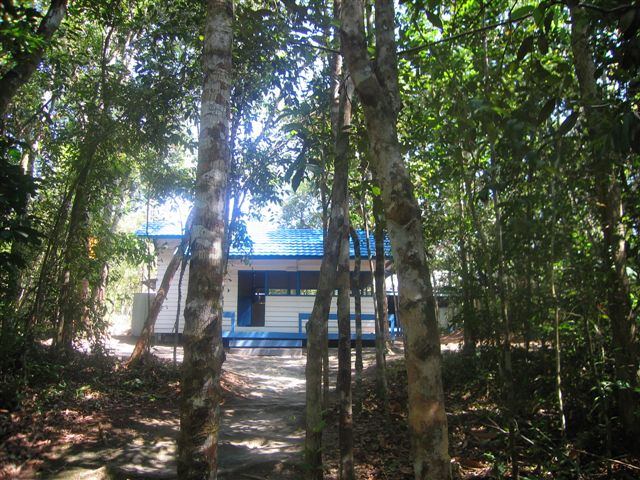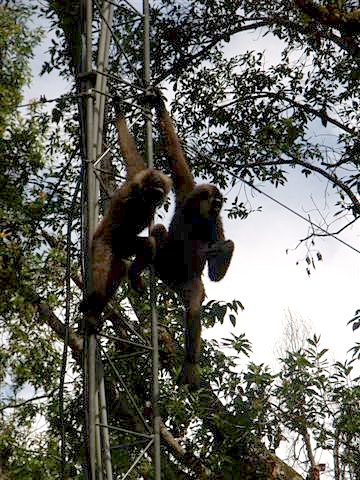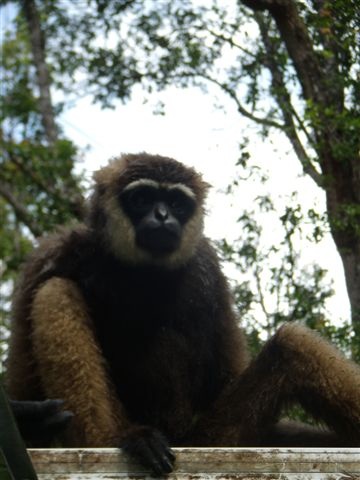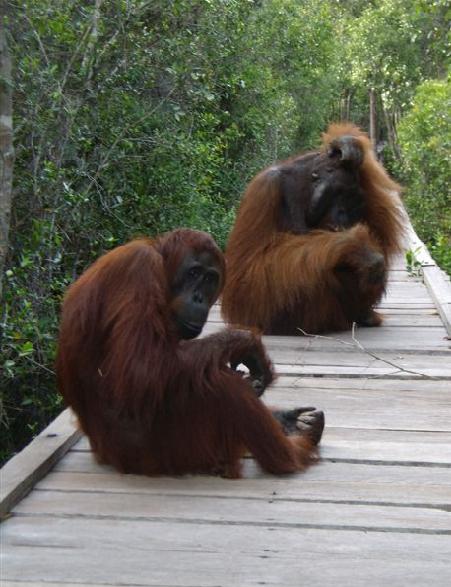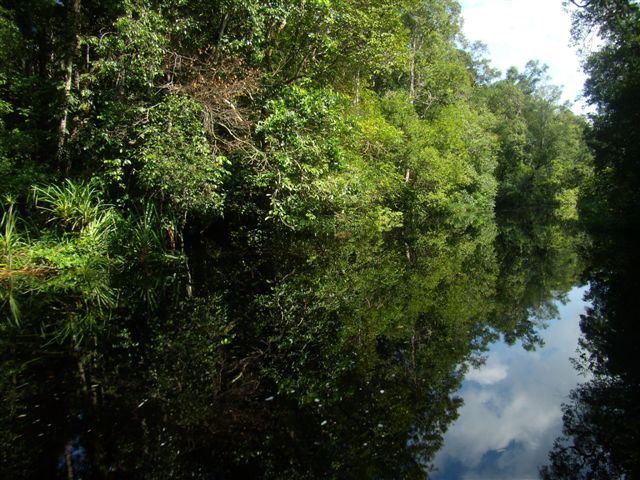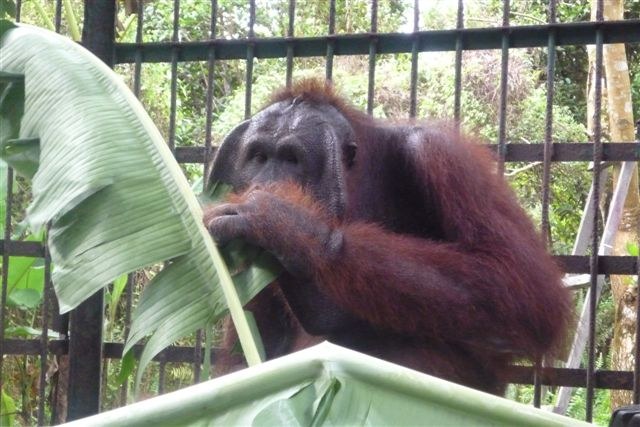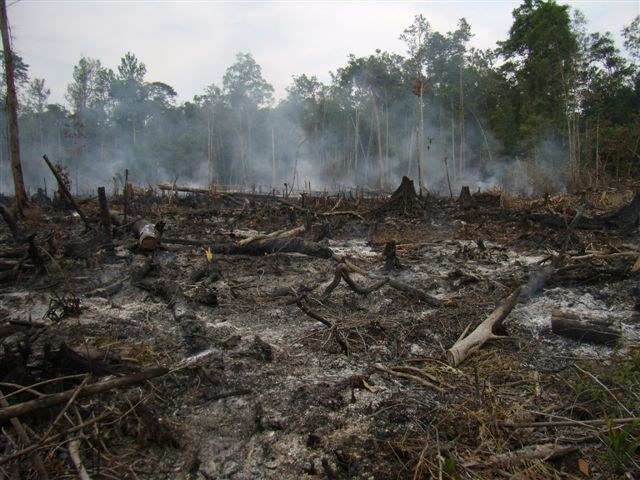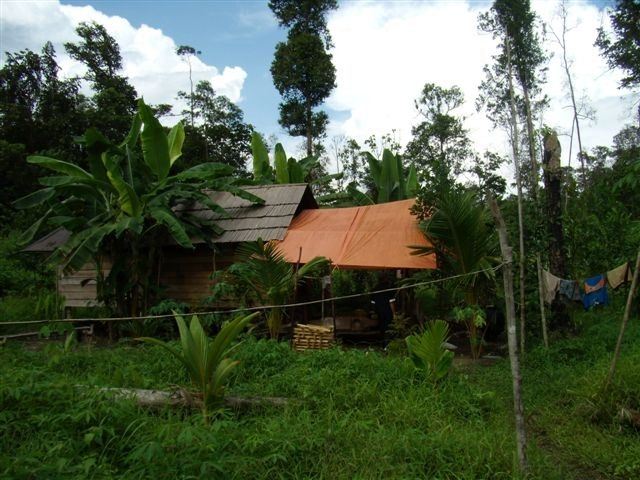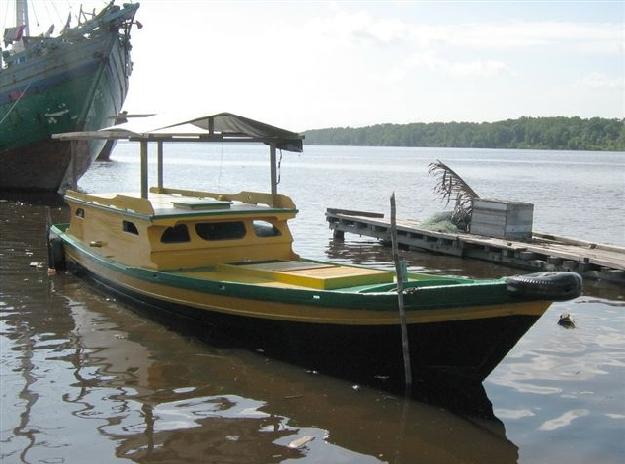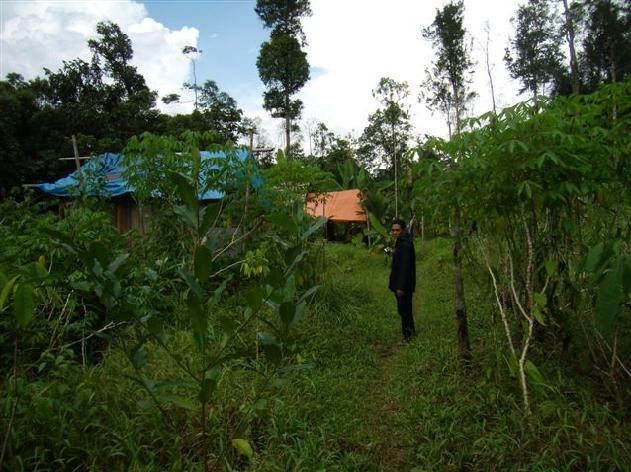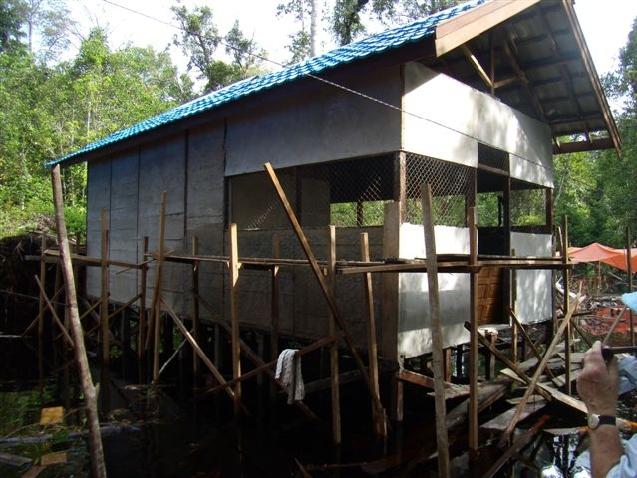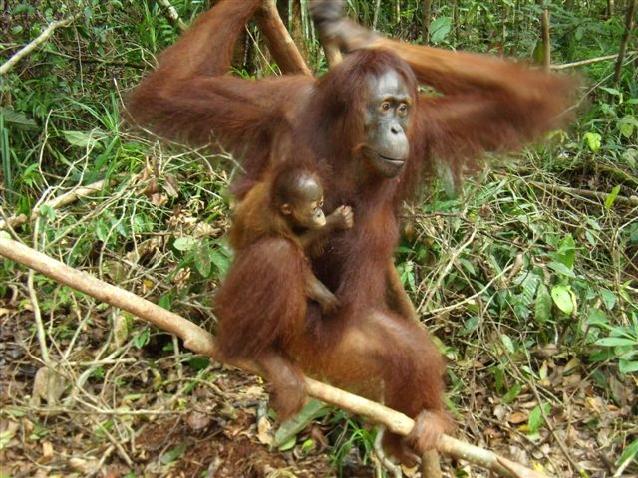One of the rules of blogging on Wildlife Direct is that you can not swear. I know that is only reasonable but it does rob me of my ability to completely describe yesterday.
It was a nightmare.
Trying to get to Sukamara, on the Western side of the Lamandau Wildlife Reserve, and back in a day is always a challenge. We were going there to choose the location of our next guard post but the backlog of admin, that I am currently struggling with, prevented me from giving the trip more time. There is no one better than Jak at picking these sites but, because we have to justify the choice to our donors, it is too much responsibility to leave him to “carry the can” alone. My head has to rest on that block.
We woke at 6am ready to depart at 7 only to be asked to delay until 9 as a member of our speedboat driver’s family had suffered an epileptic fit and had to be hospitalised. Quite reasonably, in the culture in which we work, family illnesses take precedence over anything. Hence we were two hours late leaving.
Tides change in hours.
We arrived at the fishing town of Sungai Pesir just before noon and drove straight to the Reserve, stopping only to drag a stranded vehicle out of one of the crater-sized holes in the road. We branched off the main track, into the Reserve, checked out the first potential guard post site. We then drove on as far as we could and walked to the second site, leaving the car to turn around.
The second site was great but it was fairly deep inside the reserve – more important to protect the borders – and access would be a problem (how true these words would prove to be).
The heavens opened as we walked back to the car and we were drenched by the time we got to it. There had been no need for us to hurry; the vehicle was going nowhere. It was bogged down to its axles.
Applying physics and the scientific method to the problem, I worked out what we needed to do. Applying common sense and practicality to the problem, the team set about fixing it! They did the better job, but it still took three hours to get the car unstuck.

In turn we jacked up each wheel, braced it, moved on to the next, jacked that up, braced it, and so on until we were back to the first wheel which we then jacked up a bit more, braced, and moved onto the next wheel. And so on….

Three hours later the car drove off six feet and then stuck again.
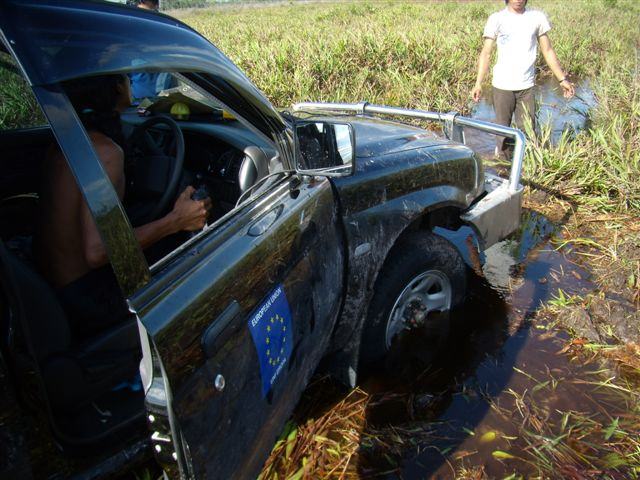
We pushed it free and it got stuck again. Soon however it was on firm ground and we could go. We went back to the first site, which, not surprisingly (!), received our unanimous seal of approval, and we continued onto our Sukamara office. There we talked through the local situation with the Mobile Education Unit, who is currently touring schools and villages in the area, before Jak and I headed for home.
I’ll leave out a description of the sound of spinning wheels and spraying mud as we drove back to Sungai Pesir. Suffice it to say, I would describe the two people we picked up, to save them the walk, as traumatised rather than grateful, but that’s beside the point.
We got back into the speedboat just before 8pm. The tide was running out so the driver went fast and in doing so missed a bend in the channel, sending us skipping over the mudflats until somehow he managed to career us back towards deeper water. Seeing what was about to happen I braced myself but still managed to mash my big toe on impact.
To properly understand our situation you really have to have been there, or have knowledge about the geography of southern Borneo. There are beaches which are dry; in front of them are mud flats which stretch for 100's of meters deepening imperceptibly until suddenly you are in the sea.
There was no moon last night; we could not even see the coast. It was too cloudy to see the stars. Navigating by compass we tried to head south into the ocean, the propeller screaming against the mud and sand while the waves from the sea constantly upset our course. Eventually we were clear and turned east. In rain and a kicking swell we aimed for the mouth of the Lamandau River, which would take us back to Pangkalan Bun. The rain came down, the waves threw us up. Though it was cold and uncomfortable it wasn’t dangerous per se but, if danger is defined as the limiting of one’s options, we were never far away from being in a crisis.
At the risk of sounding a wimp I got to the stage of just wanting the whole trip over. The light of the beacon we were aiming for never seemed to draw nearer. I lost the ability to think about each wave which threatened to flip us over, what would happen if we grounded a hundred muddy meters from the shore, if the light we were following was in fact a fishing boat, miles out?
And it still wasn’t over.
Once we turned into the river (fortunately when the rain eased off) we found ourselves confronted by a wall of mist. Either the warm air was condensing on contact with the cold river or vice-versa’ I neither know nor care. All I know is we alternated between periods of break-neck speed when the driver was confident to sudden swerves and chugging along as we tried to find the river bank again.
I post this blog unashamedly with just three poor photos. If you had been with us in that boat you would have heard a rich stream of expletives which would have been much more colourful!



